Урок на тему: "Adverbs of Frequency. My Hobby"
Матеріали уроку дають змогу навчити учнів використовувати лексичний матеріал до теми, закріпити набуті навики вживання граматичної структури Present Simple, навчити учнів вживати прислівники частотності.
Тема заняття: Adverbs of Frequency. Му Hobby
Цілі заняття:
Практичні:
- Навчити студентів використовувати лексичний матеріал до теми.
- Закріпити набуті навики вживання граматичної структури Present Simple.
- Навчити студентів вживати Adverbs of Frequency.
Освітні:
- Залучити учнів до культури мови, що вивчається.
- Розширювати філологічний кругозір.
Розвиваюча: Розвивати пам’ять, увагу, мислення студентыв та їх мовленнєві здібності.
Виховна: Виховувати активну життєву позицію та підтримувати інтерес до різних видів захоплень.
Обладнання уроку: ноутбук, наочна картка „Adverbs of Frequency“, роздатковий матеріал.
Хід заняття
Етап 1. Початок заняття: організація групи, повідомлення практичних цілей заняття. – 3 хв.
Good morning, students! How are you today? I hope you are well. Is anybody absent in the group? What’s the matter with him/her? Let’s start our lesson. Today we will talk about our hobbies in daily life. I’m sure that each of you has his or her favourite hobby and during our class we’ll learn how to express ourselves when speaking about favourite activities. The tools we are going to use will be the Present Simple Tense and the Adverbs of Frequency. So today we’ll brush up our knowledge and revise their usage in the English language.
Етап 2. Фонетична зарядка. – 10 хв.
Before we begin to discuss our topic we shall train our tongues. We will do it with the help of jokes. You should work in pairs and ask each other the questions. To find the answer, you have to read and understand the phonetically written answers. The pictures will give you a clue and after having finished the task, match the corresponding jokes and pictures. (Each pair of students receives a set of four jokes).
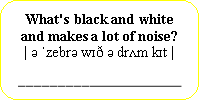
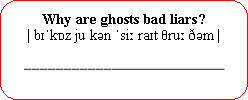










Етап 3: Ознайомлення з новою темою “Adverbs of Frequency”. – 10 хв.
We use some adverbs to describe how frequently we do an activity.
These are called adverbs of frequency and include:
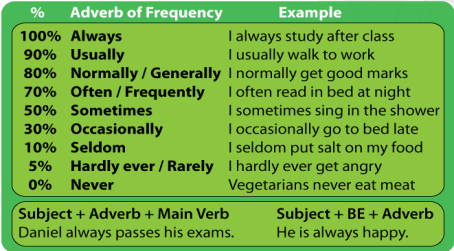
The Position of the Adverb in a Sentence
- An adverb of frequency goes before a main verb (except with To Be).
- An adverb of frequency goes after the verb To Be.
N.B. We use hardly ever and never with positive, not negative verbs:
- She hardly ever goes in for sports.
- They never goes skiing.
We can also use the following expressions when we want to be more specific about the frequency:
- every day - once a month - twice a year - four times a day - every other week
4. Етап. Перевірка розуміння граматичного матеріалу та автоматизація дій студентів. – 10 хв.
Exercise 1. Insert the adverbs of frequency and translate the sentences.
- He listens to the radio. (often)
- They read a book. (sometimes)
- Pete gets angry. (seldom)
- Tom is very friendly. (usually)
- I take sugar in my coffee. (hardly ever)
- Ramon and Frank are hungry. (often)
- My grandmother goes for a walk in the evening. (always)
- Walter helps his father in the kitchen. (usually)
- They watch TV in the afternoon. (never)
- Christine smokes. (never)
Exercise 2. Rewrite the sentences in the correct order.
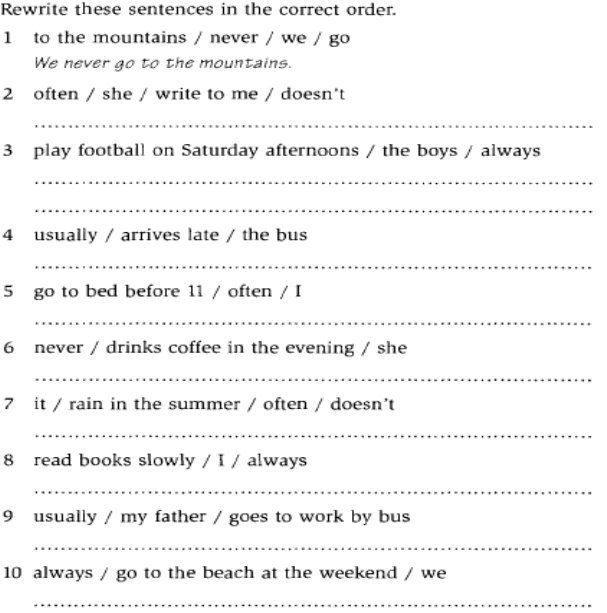
5. Етап. Представлення нової лексичної теми “My Hobby”
![]() Task 1. Let us think of those hobbies which we can already name and write them on the board. – 5 хв.
Task 1. Let us think of those hobbies which we can already name and write them on the board. – 5 хв.

![]()
![]()
![]()
![]()

 Task 2. Match the pictures with the labels below. Translate into Ukrainian. – 10 хв.
Task 2. Match the pictures with the labels below. Translate into Ukrainian. – 10 хв.
-
 playing baseball
playing baseball
- skateboarding
- keeping ants
-
 catching butterflies
catching butterflies
- climbing trees
- collecting stamps
-
 playing video games
playing video games
- riding the bike
- playing boardgames
- swimming
-
 reading books
reading books
- playing with your dog
- collecting baseball cards
-
 playing hide-and-seek
playing hide-and-seek
-
 scuba diving
scuba diving
- playing cards
- painting
-
 building sandcastles
building sandcastles
- playing tag
-
 camping out
camping out
-
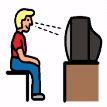 playing American football
playing American football
-
 playing with dolls
playing with dolls
- watching TV
-
 playing soccer
playing soccer
Етап 6. Перевірка розуміння прочитаного тексту до теми.
Task 3. Listening and Reading. – 15 хв.
You will listen to Penny talking about her hobby. Give answers to such questions after having listened to the text.
- What hobby does she have? Why has she chosen it?
- What kind of things does she make?
- Is she good at what she’s doing now? Give examples.
Word File:
pottery – гончарство
potter’s wheel – гончарний круг
pot – горщик
bowl - миска
mug – кухоль
teapot - чайник
shape - форма
My Hobby
Have you got a hobby? I have – pottery. I’ve done it since I was quite little because my uncle and aunt are potters, and whenever we went to visit them on holiday I always played on the pottery wheel.
I’ve only really become more serious about pottery since about 2008, when I decided to join an evening class. Then, last year, I bought my own potter’s wheel, so I can make pots at home now.
I’ve made lots of different things over the years. When I started, I made some very strange, heavy little bowls. But little by little, I’ve managed to make thinner bowls, and I’ve just made a set of bowls that we use for breakfast every day. I’ve also made lots of mugs. These are getting better too – the first ones were really heavy even before you put coffee in them! My neighbour’s just asked me to make a set of mugs for her, and I’ve sold quite a few to friends.
When I first started, I used to put a ball of clay on the wheel, and then I had absolutely no control over it. Sometimes it became a bowl, sometimes a plate, maybe a mug, and often I had to throw it away – it was always quite a surprise! Thankfully I have improved since then, as I can now decide what I want to make before I start making it. I have learnt to control the clay to make the shape I want. I have also started making bigger things like jugs and serving bowls, and more difficult things like teapots. I haven’t sold any teapots yet, but my kitchen is getting very full so I think I’ll need to start selling them soon!
Режим доступу: http://esol.britishcouncil.org/content/learners/grammar-and-vocabulary/grammar-lessons/my-hobby
Exercise Decide if the following statements are True or False after reading the text.
- Penny started doing pottery at her uncle and aunt's pottery.
- She started doing more pottery in 2008.
- She only makes pots at her class.
- She thinks her pots are getting better.
- She made a set of bowls for her neighbour.
- At the beginning, she never knew what she was going to make.
- She makes bigger things now.
- She doesn't have room for more pots.
Етап 7. Розвиток мовлення студентів із використання нових лексичних одиниць та граматичного матеріалу. – 15 хв.
Task 4. Interview another student (choose 3 – 5 questions). Write down the answers in your notebook. Now tell the whole class about the person you interviewed.
Example: Let me introduce (name). She has 2 sisters and 1 brother. She goes to cinema once a week and likes action movies. Her favourite food is spaghetti and her favourite drink is orange juice. On Saturdays, she usually plays volleyball with friends and plays cards with her siblings.


 Conversation cards
Conversation cards
Let’s talk about YOU

Етап 8. Завершення заняття: пояснення домашнього завдання, підсумки заняття, оцінювання. – 5 хв.
Your home assignment for the next class is:
- To write 5 sentences using the adverbs of frequency in them;
- To write a short text about yourself and your hobbies and retell it. You may use conversation cards to give you some ideas.
Thank you for a great class! We have done a lot at the class. You have learnt how to use the adverbs of frequency such as always, usually, seldom, etc. Besides, we have enlarged our vocabulary on the topic “My Hobby”. The most active at the class were…. They have excellent marks. Good marks…. Satisfactory marks…. The lesson is over. See you.

про публікацію авторської розробки
Додати розробку
